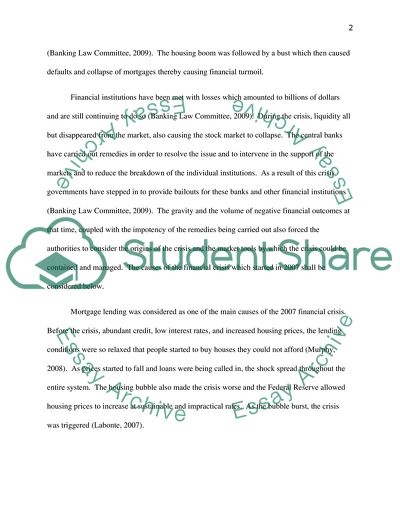Cite this document
(Explore the causes of the current financial crisis that started in Essay, n.d.)
Explore the causes of the current financial crisis that started in Essay. https://studentshare.org/finance-accounting/1767630-explore-the-causes-of-the-current-financial-crisis-that-started-in-2007-which-theoretical-views-seem-to-be-more-relevant-in-explaining-its-causes
Explore the causes of the current financial crisis that started in Essay. https://studentshare.org/finance-accounting/1767630-explore-the-causes-of-the-current-financial-crisis-that-started-in-2007-which-theoretical-views-seem-to-be-more-relevant-in-explaining-its-causes
(Explore the Causes of the Current Financial Crisis That Started in Essay)
Explore the Causes of the Current Financial Crisis That Started in Essay. https://studentshare.org/finance-accounting/1767630-explore-the-causes-of-the-current-financial-crisis-that-started-in-2007-which-theoretical-views-seem-to-be-more-relevant-in-explaining-its-causes.
Explore the Causes of the Current Financial Crisis That Started in Essay. https://studentshare.org/finance-accounting/1767630-explore-the-causes-of-the-current-financial-crisis-that-started-in-2007-which-theoretical-views-seem-to-be-more-relevant-in-explaining-its-causes.
“Explore the Causes of the Current Financial Crisis That Started in Essay”. https://studentshare.org/finance-accounting/1767630-explore-the-causes-of-the-current-financial-crisis-that-started-in-2007-which-theoretical-views-seem-to-be-more-relevant-in-explaining-its-causes.


